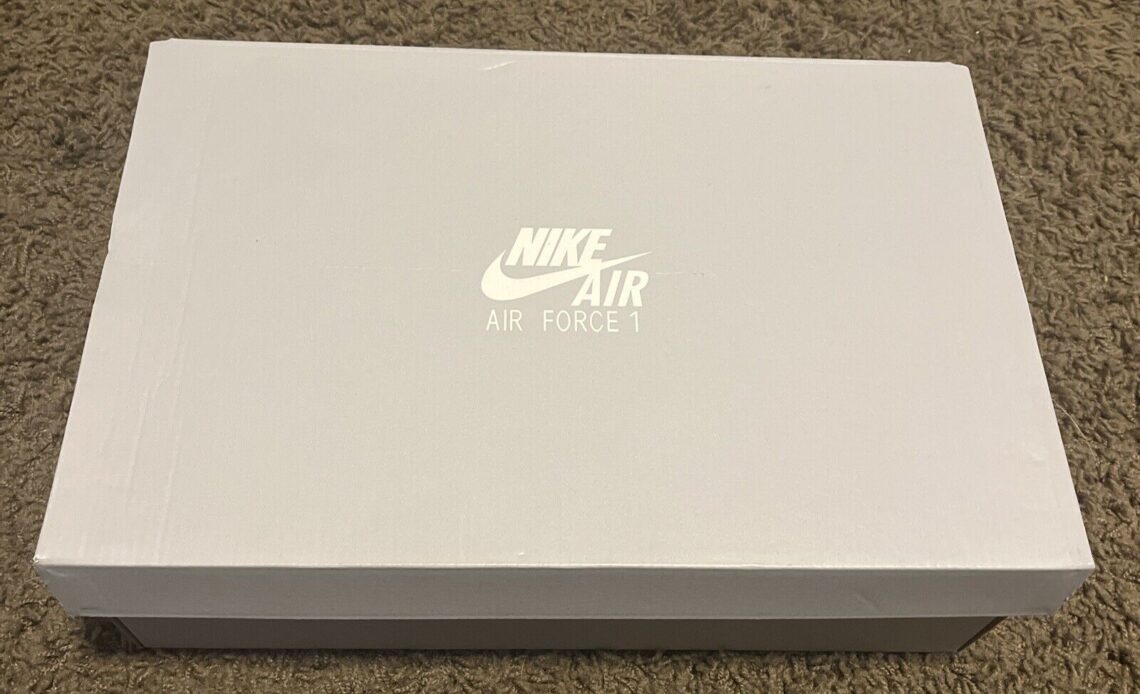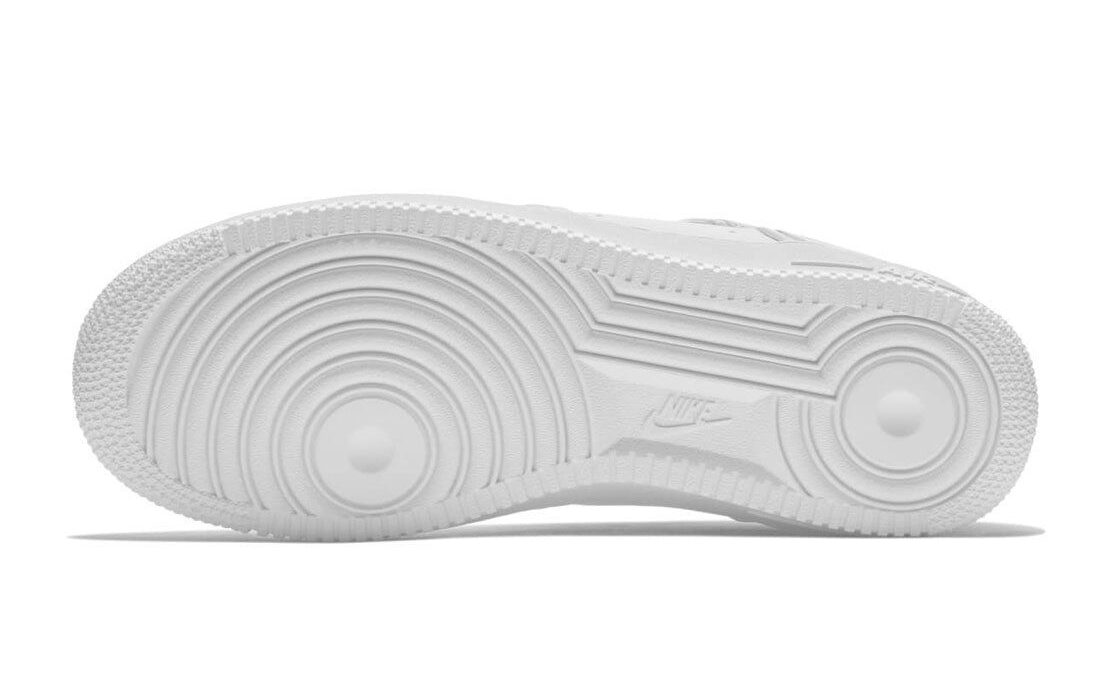When it comes to sneaker culture, few shoes are as iconic and timeless as the Nike Air Force 1. These classic sneakers have been a staple in the footwear world for decades, and their popularity continues to soar. However, with the rise of counterfeit sneakers, ensuring the authenticity of your Air Force 1s has never been more important. In this guide, we’ll take you through the essential steps to authenticate your Air Force 1 sneakers, so you can confidently rock the real deal.
1. Examine the Box
The first clue to authenticity lies in the shoebox. Genuine Air Force 1 boxes feature high-quality printing, crisp logos, and a label with detailed information about the sneakers. Be on the lookout for any inconsistencies in the box’s design, font, or label.

2. Check the Size Label
The tongue label of authentic Air Force 1s should be neatly stitched and centered.The label contains information such as the shoe’s size, manufacturing country, and other details. Ensure that the information matches the shoe and is accurately printed. Pay attention to the font, spacing, and overall quality of the label. Counterfeit sneakers often have noticeable flaws in this area.

3. Inspect the Swoosh Logo
The Nike Swoosh logo on genuine Air Force 1s should be perfectly symmetrical, with no visible stitching marks or glue residue. Counterfeit versions often have sloppy craftsmanship in this regard.

4. Scrutinize the Insole and Heel Tab
Authentic Air Force 1s have insoles that are well-padded and comfortable. Inspect the heel tab for clean stitching and quality materials. Counterfeit pairs may feature rough edges and subpar materials.

5. Study the Outsole
The outsole of genuine Air Force 1s is made of high-quality rubber, with a distinct pattern that provides excellent traction. Counterfeits may have irregularities in the pattern or use substandard rubber.

6. Verify the SKU Number
Every pair of authentic Air Force 1s has a unique SKU (Stock Keeping Unit) number. Ensure that the SKU on the box matches the SKU inside the shoe. Counterfeit sneakers often have incorrect or missing SKU numbers.
7. Stitching Quality
Examine the stitching throughout the shoe. Authentic Air Force 1s have precise, clean, and evenly spaced stitching. Counterfeit pairs often have uneven or sloppy stitching.
8. Quality of Materials
Authentic Air Force 1s are made with high-quality leather or other premium materials. Inspect the texture, feel, and smell of the materials. Counterfeit versions may use inferior materials that look or feel off.
9. Air Cushioning
Authentic Air Force 1s feature Nike’s signature Air cushioning technology for comfort. Press the midsole to feel the cushioning. Counterfeit sneakers often lack this feature or have noticeably different cushioning.
10. Label Inside the Tongue
Look for a label inside the tongue with the shoe’s size, manufacturing country, and other details. Ensure that the information matches the shoe and is accurately printed.
11. Sizing and Fit
Authentic Air Force 1s typically fit true to size. Be cautious if the sizing seems significantly different from standard sizes or if the fit is uncomfortable.
12. Color Accuracy
Pay attention to color accuracy. The colors on authentic Air Force 1s should be consistent and match official Nike colorways. Counterfeit pairs may have slight color variations.
Remember that counterfeiters are continually improving their replicas, so it’s essential to be thorough when checking for authenticity. Combining multiple checkpoints and purchasing from reputable sources are your best strategies for ensuring you’re getting genuine Nike Air Force 1 sneakers.
Conclusion
In conclusion, remember that counterfeiters are continually improving their replicas, so it’s essential to be thorough when checking for authenticity. Combining multiple checkpoints and purchasing from reputable sources are your best strategies for ensuring you’re getting genuine Nike Air Force 1 sneakers. Authenticating your Air Force 1 sneakers is a crucial step in ensuring you’re getting a genuine and high-quality product. By carefully examining the shoebox, labels, stitching, materials, and purchasing from reputable sources, you can confidently add authentic Air Force 1s to your collection. These iconic sneakers deserve the recognition and appreciation that comes with owning the real deal, so use this guide to unlock authenticity and elevate your sneaker game.
FAQs
Key features include examining the box, checking the size label, inspecting the Nike Swoosh logo, scrutinizing the insole and heel tab, studying the outsole, verifying the SKU number, assessing the stitching quality, material quality, air cushioning, label inside the tongue, sizing and fit, and color accuracy.
An authentic Nike Swoosh should be perfectly symmetrical, without visible stitching marks or glue residue. Counterfeit versions often display poor craftsmanship in this area.
Yes, every pair of authentic Air Force 1s has a unique SKU number. Ensure the SKU on the box matches the SKU inside the shoe. Counterfeits may have incorrect or missing SKU numbers.
Authentic Air Force 1s feature precise, clean, and evenly spaced stitching, while counterfeit pairs often have uneven or sloppy stitching.
The shoebox is very important. Genuine Air Force 1 boxes have high-quality printing, crisp logos, and a detailed label. Inconsistencies in the box’s design, font, or label are red flags.
Yes, authentic Air Force 1s have well-padded insoles and clean stitching on the heel tab. Counterfeits may have rough edges and subpar materials.
The outsole should be made of high-quality rubber with a distinct pattern for excellent traction. Irregularities in the pattern or substandard rubber suggest a counterfeit.
Yes, authentic Air Force 1s feature Nike’s Air cushioning. Counterfeit sneakers often lack this feature or have a noticeably different cushioning feel.
The tongue label should be neatly stitched and centered, containing information like the shoe’s size and manufacturing country. Counterfeits often have flaws in font, spacing, and overall quality.
Authentic Air Force 1s typically fit true to size. Significant deviations from standard sizes or an uncomfortable fit may indicate a counterfeit.
Color accuracy is crucial. The colors on authentic Air Force 1s should be consistent and match official Nike colorways. Variations may indicate counterfeits.
Common mistakes include not checking the details thoroughly, such as SKU numbers and stitching quality, or overlooking the quality of materials and craftsmanship.
Counterfeiters continually update their replicas, so it’s essential to stay informed about the latest authentication methods and to always be thorough in examining sneakers.

